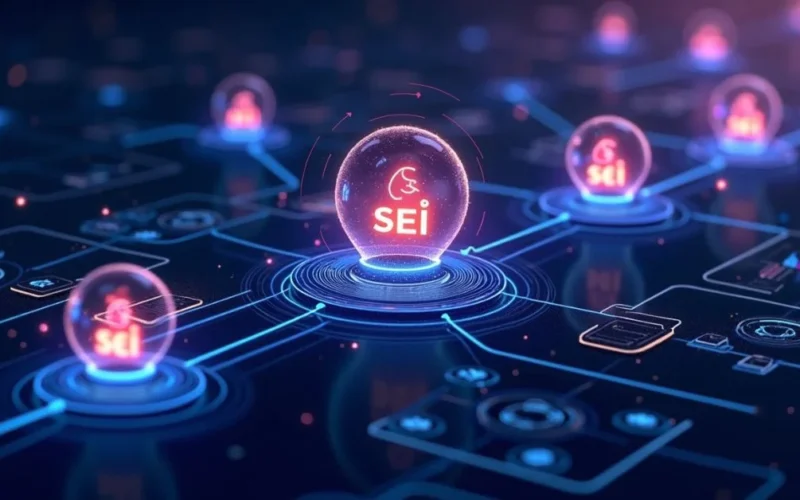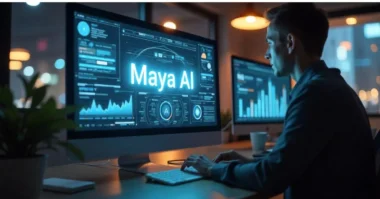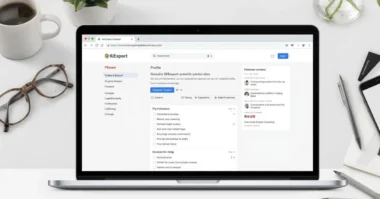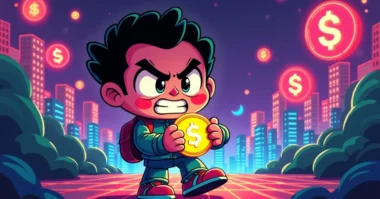Table of Contents
SEI is a Layer 1 blockchain that focuses on trading and decentralized finance (DeFi).SEI makes trading faster, cheaper, and more secure, unlike many traditional blockchains. Its native token, the SEI token, powers the network. The token plays a big role in the SEI ecosystem, and understanding how it works can help investors, developers, and users make better decisions.
What Is the SEI Token?
SEI is the primary digital currency that powers the SEI blockchain network. Like how Ethereum uses ETH or Bitcoin uses BTC, SEI uses SEI tokens. The network uses SEI tokens to keep running and to reward users who support it. People use the SEI token in many different ways across the SEI network. These uses include paying fees, staking, governance, and helping DeFi apps work smoothly. It helps the system stay fair and safe for everyone.
Main Utility of SEI Tokens
Let’s break down the main uses of SEI tokens in the ecosystem. These use cases show why SEI tokens are important to the network.
1. Transaction Fees
Like many other blockchains, SEI uses its token to pay for network fees. These fees are small amounts you pay when you do things like send tokens or use a smart contract. The SEI token makes sure the network isn’t flooded with spam and helps pay the people who run the system.
2. Staking
Staking means locking up your SEI tokens to help keep the network safe. In return, you earn more SEI tokens as a reward. SEI uses a type of staking known as delegated proof-of-stake (DPoS). This means you can either run your own validator node or delegate your tokens to someone else who does. Either way, you get rewarded for helping the system work properly.
3. Governance
Holders of SEI tokens can help decide what happens on the network. They vote on key proposals, like software upgrades or changes to the rules. The more SEI tokens you have, the more voting power you get. This makes the system more fair and gives users a voice.
4. Collateral and Liquidity
Some DeFi apps on the SEI network might ask users to lock their tokens as collateral to access certain features or services.For example, if you want to borrow another token, you may need to lock SEI tokens. Some trading apps also use SEI as a base token for liquidity pools. This means SEI helps make the trading market work.
Why SEI Matters in the Crypto World?
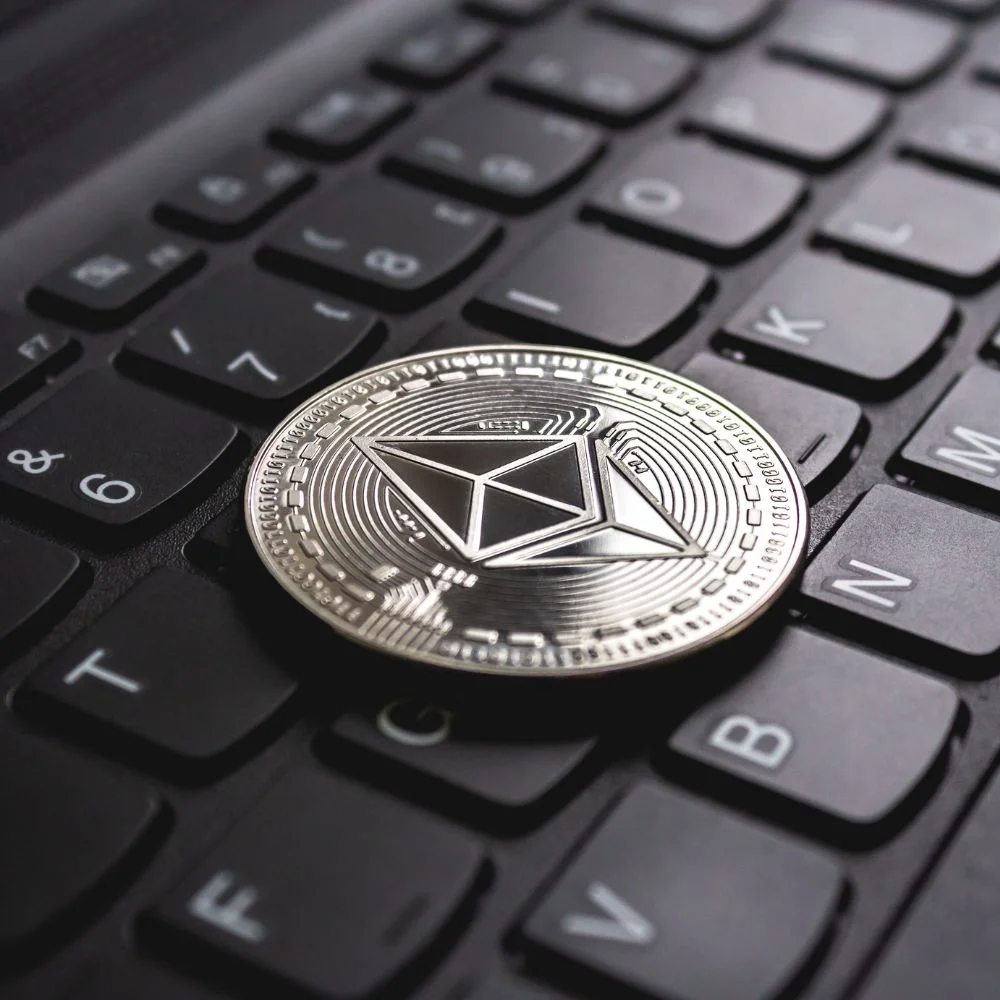
SEI is not just another blockchain. It is built to solve a real problem: trading on blockchains is often slow and expensive. SEI is different because it is optimized just for trading and DeFi. This means people who build apps or trade tokens on SEI will have a better experience.
Also, SEI supports many popular features, like smart contracts and high-speed transactions. Its tokenomics, how the token is used, shared, and controlled, is one of its key strengths.
Token Allocation: Who Gets SEI Tokens?
When new tokens are created or sold, it’s important to know who is getting them and why. SEI token allocation refers to how all the tokens are divided among different groups. This includes developers, investors, users, and the community.
Here’s a general idea of how SEI tokens are distributed:
- Community and Ecosystem Fund: A large part of SEI tokens go to the community. This is used to support developers, users, partnerships, and ecosystem growth. The goal is to make the network stronger and more useful for everyone.
- Core Team: Some SEI tokens go to the founding team and early employees. These are the people who built the platform. Usually, these tokens are locked or given over time so the team stays committed to the long-term success of the network.
- Investors: Early investors who supported SEI before it launched also get a share of the tokens. Like with the core team, these tokens are often locked for some time.
- Foundation and Treasury: The SEI Foundation holds a reserve of tokens for future needs. This could include funding research, supporting the community, or responding to emergencies.
- Public Sale and Airdrops: Some tokens are sold to the public or given away through airdrops. This helps more people learn about SEI and start using the network.
While the exact percentages may change over time, this kind of breakdown helps make sure that everyone involved, builders, users, and supporters, gets something.
SEI and DeFi Integration
One of SEI’s biggest goals is to support DeFi, or decentralized finance. This includes things like lending platforms, token swaps, stablecoins, and more. The SEI token plays a big role here. Developers use SEI tokens to pay for building apps. Users may use SEI as collateral or to pay fees. Liquidity providers may earn SEI rewards. All of this helps DeFi projects grow and serve more people.
SEI is also compatible with Cosmos, which means it can connect with other chains and apps. This opens up even more use cases and trading options.
Rewards and Incentives
To grow the network, SEI uses incentives and rewards. People who provide liquidity, vote on proposals, or build apps can earn SEI tokens. These programs help the network grow while rewarding those who take part.
Some examples of incentives include:
- Staking rewards for users and validators
- Developer grants for building useful apps
- Liquidity mining for adding funds to token pools
- Referral bonuses for bringing in new users
- These rewards help make SEI more active and valuable over time.
Challenges Facing SEI Tokenomics
While SEI has many strengths, it also faces some risks. Like all crypto networks, SEI must deal with market ups and downs. If prices drop too much, people may stop staking or using the token. There’s also the risk of governance problems. If only a few large holders control most of the tokens, they could make unfair decisions. This is why community growth and fair token distribution are so important.
Another challenge is adoption. SEI needs more apps and users to stay competitive with big networks like Ethereum, Solana, and others.
The Future of SEI Tokenomics
SEI has strong potential if it continues to grow its ecosystem and user base. As more apps are built on SEI and more users start trading, the demand for SEI tokens may go up. The SEI Foundation and community are likely to keep adjusting the tokenomics to improve security, fairness, and usefulness.
Upcoming upgrades and partnerships could also bring more attention to the network. If SEI continues to deliver low-cost, high-speed DeFi solutions, its token will remain an important part of that success.
Conclusion
SEI tokenomics is a well-thought-out system that supports a powerful, fast, and trader-focused blockchain. The SEI token is not just for buying and selling it plays a big role in keeping the network secure, fair, and active.SEI tokens are used for fees, staking, governance, and DeFi. Governance lets token holders vote and shape the network’s future. Staking and rewards help keep the network safe and lively.
Related Topic: Crypto: Chudjak (CHUD) Token
